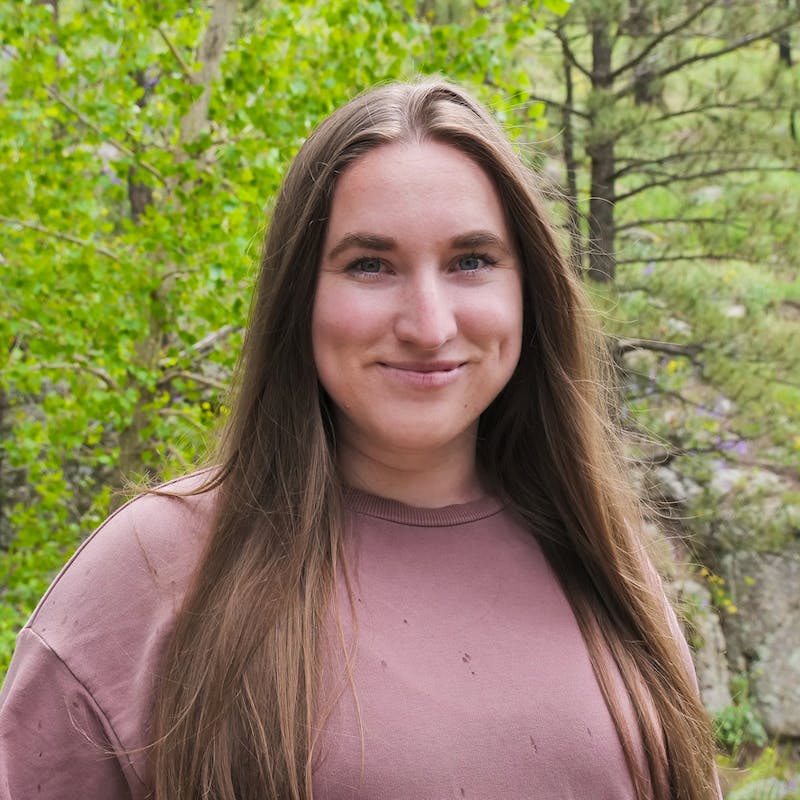Snow flew as 15 new sets of wolf paws hit the ground. These arrivals from Canada were carefully selected, captured and released in Colorado for the second year of the state’s historic wolf reintroduction. And they aren’t just here for the scenery; these wolves are an essential part of Colorado’s larger vision to restore the native ecosystem.
The process of reintroducing wolves has involved years of planning to ensure their best chance of survival and, in this case, was an internationally coordinated effort among wildlife agencies. The wolves were captured in British Columbia, which has an abundant and widely distributed wolf population. They were then examined and cared for by a veterinarian before being safely transported to Colorado. Once there, biologists released them into Eagle and Pitkin counties.
These wolves couldn’t have come at a better time. February is peak mating season for wolves, giving them the optimal opportunity of finding a partner in their new home.
From Lone Wolf to Partners for Life
Wolves use a unique mix of scents and signals to find a partner. When a female is ready to mate, she gives off specific scents to attract nearby males. Sometimes, wolves need to travel long distances to find the right partner, but once they do, they typically mate for life and form a new pack. This pack will typically consist of a dominant breeding pair and their pups.
In the United States, gray wolves breed from January through March. By the end of spring, the whole pack is pitching in to care for the new pups. This is part of the wolves' way of building strong teamwork and family bonds.
As wolf pups grow, they gradually explore farther from their den. By six months, they’re big enough to travel and are learning how to hunt with their pack. At two years old, they’re fully grown, capable of hunting on their own and have reached breeding-age. Wolves who want to find a mate and lead their own pack must leave their natal pack and become "lone wolves," starting the cycle anew. While the life of a lone wolf can be challenging, it’s essential for the survival of the species for new wolf packs to form, grow and branch into new areas.
What’s Next for the New Wolves of Colorado



Colorado now has 24 breeding-aged adult wolves and five pups who were born last year. The 15 new wolves, which include seven males and eight females, will increase the chances of new mating pairs and packs forming, boosting the genetic diversity and resilience of Colorado’s budding wolf population. Expanding the gene pool with a fresh mix of new wolves will help future generations adapt to challenges like diseases, shifting climates and other changes in their environment. For biologists, genetics are a critical component of any imperiled species recovery effort. Starting with a good foundation brings us one step closer to restoring a self-sustaining population. For all these reasons, Colorado Parks and Wildlife is not reintroducing whole packs to the state, and is instead looking for young, breeding-age individuals ready to disperse.
As new wolf packs establish territories, their behavior and movement also become more consistent, making monitoring and conflict prevention much easier. CPW can monitor wolf movement through the GPS enabled collars assigned to them during capture. These collars send biologists data roughly every 16 hours.
To a Paws-itive Future
The future is bright for wolves in Colorado. CPW has now released 25 wolves, bringing them close to their goal of 30 to 50 total reintroduced wolves by 2028. We should know by spring if the state’s newest residents had a successful matchmaking season. It’s the start of an exciting journey that will benefit the entire ecosystem for generations to come!
2025 is a year full of promise for these iconic animals, and we can’t wait to track their progress. Be sure to follow Defenders of Wildlife for the latest updates and more heartwarming stories from the field!








